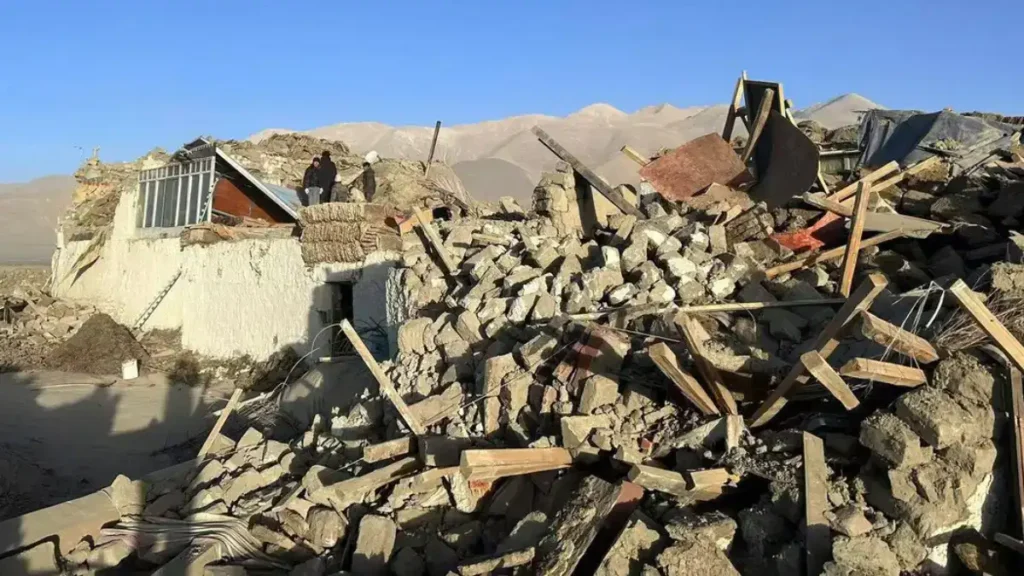Tibet earthquake 2025 struck near Nyingchi with a 5.5 magnitude. No casualties reported as authorities responded swiftly and ensured public safety.
A moderate earthquake with a magnitude of 5.5 struck Tibet early Monday morning, shaking the region and prompting emergency response efforts. The tremor, confirmed by the China Earthquake Networks Center (CENC), hit at 4:20 AM local time, with the epicenter near Nyingchi, a city located in southeastern Tibet.

People Feel Strong Tremors Before Dawn
The quake originated at a depth of 10 kilometers, making it shallow enough to cause noticeable shaking on the surface. People living in nearby towns felt the tremors clearly and many rushed outdoors, concerned about potential aftershocks. Fortunately, early reports indicated no serious damage.
Local authorities noted that the region’s building designs and recent improvements in construction helped prevent structural collapse.
No Deaths or Injuries Reported
Emergency officials confirmed that no injuries or deaths occurred during the earthquake. Teams moved quickly to assess the situation and ensure safety in remote villages. “We haven’t received any reports of casualties or major damage,” said a spokesperson from the Tibet Earthquake Bureau.
Rescue personnel visited vulnerable areas, checked buildings, and offered assistance where needed. Their prompt actions helped restore a sense of calm among residents.
Government Launches Immediate Response
After the quake struck, disaster response teams mobilized across the region. The Ministry of Emergency Management sent engineers, medical staff, and rescue units to the quake-affected areas. Helicopters and ground vehicles reached villages in difficult-to-access terrain.
Officials also prepared emergency shelters in case of evacuations. However, since there was no serious damage, most residents returned to their homes after the initial scare.
A Region Known for Seismic Activity
Tibet lies in one of the most earthquake-prone zones on Earth, where the Indian and Eurasian tectonic plates collide. This geological setting frequently causes seismic activity, ranging from small tremors to major quakes.
In 1950, the region experienced a devastating 8.6-magnitude earthquake, which caused widespread destruction and heavy loss of life. Since then, improvements in infrastructure and early warning systems have helped reduce disaster impacts.
Residents React with Caution
The quake jolted people awake in the early morning hours. Several shared videos on Chinese social media, showing families gathering outside their homes in pajamas. “The shaking lasted just a few seconds, but it was strong enough to wake us all,” said Tsering Lhamo, a local resident near Nyingchi. “We stayed outside for a while just in case something else happened.”
Officials advised residents to remain cautious and stay informed, as aftershocks could still follow in the coming days.
Services and Transportation Stay Functional
Despite the shaking, essential services across the region remained unaffected. The Ministry of Transport confirmed that all roads and highways stayed open. Train lines continued operating normally, and telecommunications systems stayed stable. Utility companies also inspected power lines and confirmed there were no outages or hazards.
These inspections ensured that life in the region returned to normal quickly.
Seismologists Continue Monitoring
Seismologists from the China Earthquake Administration continue to monitor the region closely. They are using sensors and satellite tools to track any additional seismic activity. Officials issued guidelines urging residents to avoid damaged structures and remain alert.
Experts also reminded people about the importance of earthquake drills and preparation, especially in seismically active areas like Tibet. “Being prepared is the best defense against natural disasters,” said Dr. Liu Jian, a geologist at the Chinese Academy of Sciences.
Improved Awareness and Preparedness Helped
This event highlighted how improved readiness can prevent disaster. Schools, hospitals, and public buildings now follow stricter safety codes designed to withstand earthquakes. Public education efforts and frequent drills have made people more aware of how to react quickly and safely during emergencies.
“The low impact of this quake shows how far we’ve come in terms of disaster preparedness,” said a regional emergency official. “We must keep improving our systems and educating people.”
A Reminder of Nature’s Power
Although the quake did not result in loss of life or property, it served as a reminder of Tibet’s vulnerability to seismic events. People in the region live with the constant risk of earthquakes, and Monday’s tremor reinforced the importance of staying alert and well-prepared.
Tibetan residents, known for their resilience and connection to the land, once again showed strength in the face of natural forces. The coordination between local authorities and national disaster teams ensured safety and stability throughout the region.
Conclusion
The 5.5-magnitude earthquake in Tibet startled many but caused no casualties, thanks to timely government action and strong community response. The quick inspections, functioning services, and absence of damage reflected significant progress in disaster preparedness.
As experts continue to monitor for aftershocks, officials urge residents to remain cautious and follow safety instructions. In a region shaped by its mountainous terrain and geological forces, the ability to adapt and stay ready remains key to protecting lives and livelihoods.






